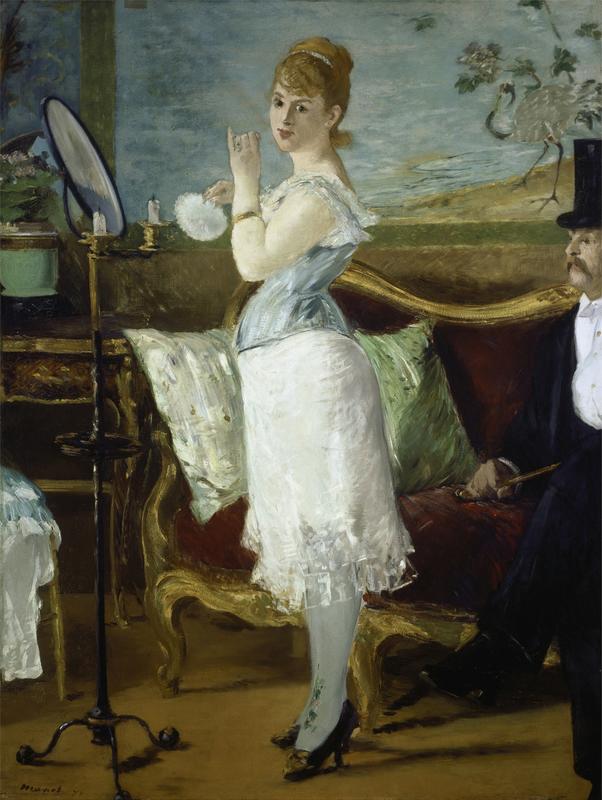More about Nana

Contributor
You’re going to think twice before you call your grandma Nana again.
Turns out, street slang for 'prostitute' in 19th century France was, you guessed it, 'Nana.' In a bid to document different facets of modern life, Manet had started looking within the brothel for subject matter. He wasn’t the first one to do so, and he wouldn’t be the last. But I would argue he was one of the most insightful.
Manet cast Henriette Hauser in his production of Nana. Like many young girls in Paris at the time, she was an aspiring actress. In the popular imagination, however, she was remembered as the mistress of the Prince of Orange. (Which, coincidentally, is not a bad name for Trump.) Not much is known about the gentleman caller sitting on the couch, but that’s probably the point. Scandal was scribbled into Manet’s job description, and he took his job very seriously. Manet employed the 'alla prima' style for Nana, meaning he did not wait for the paint to dry before applying more. A beloved painting technique for impatient painters. Nonetheless, the painting was immediately rejected by the Paris Salon of 1877.
The weirdest thing about scandalous paintings from the yesteryears is that they don’t really scandalize anymore. It becomes harder to figure out what was so shocking about a painting of a prostitute. Western painters had been painting harems for centuries, so why the outrage? She's not even naked, just underdressed. Manet had discovered, “the satin corset may be the nude of our era”. He was right. That was enough to cause a stir. She looks like a strong, confident woman. What’s so scary about that? For the French elite, this was all very wrong. Women were meant to please, not overpower. They were meant to submit, not dominate. She wasn’t supposed to be the star of the show.
Sources
- The Local. “French Word of the Day: Nana.” The Local. The Local, July 29, 2019. https://www.thelocal.fr/20190729/french-word-of-the-day-nana.
- “Nana, 1877 by Edouard Manet.” Manet. Accessed September 30, 2019. https://www.manet.org/nana.jsp.
- Donald, James, and Ali Rattansi. "Race", Culture, and Difference. London: Sage Publications in association with the Open University, 2001.
- “Alain Press.” Alain Press (blog), n.d. https://alainpress.tumblr.com/post/46367026697/édouard-manet-french-183….
- Allan, Scott, Emily A. Beeny, Gloria Lynn Groom, Bridget Alsdorf, Carol M. Armstrong, Helen Burnham, Leah Lehmbeck, Devi Ormond, and Manet Édouard. Manet and Modern Beauty: the Artists Last Years. Los Angeles: The J. Paul Getty Museum, 2019.
Featured Content
Here is what Wikipedia says about Nana (Manet)
Nana is a painting by French painter Édouard Manet. It was completed in 1877 and was refused at the Salon of Paris the same year. Manet decided to show his painting it in the window of a shop on the Boulevard des Capucines, one of Paris’s main street. The painting gathered attention and crowds during its exhibition, due to Manet's fame in Paris. The work is now at the Kunsthalle Hamburg art museum in Germany.
Check out the full Wikipedia article about Nana (Manet)












